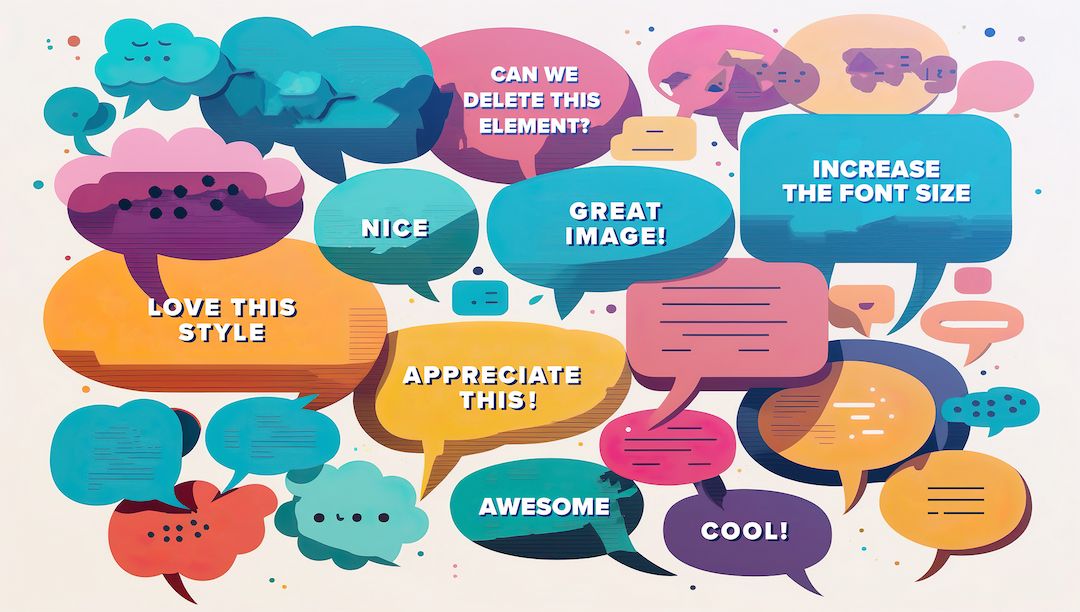Hopefully you’ve never had to have the discussion that starts with “we need more time” “or we’re not going to hit our deadline”, but the reality is, if you’re working in marketing today it will probably happen at some point if it hasn’t already happened this week.
Effective marketing project management goes beyond the Excel spreadsheet of tasks and color codes. If deadlines are getting the best of you more often lately, I’m happy to assist! I’ve spent time talking with marketing teams and agencies to identify why marketing teams most often bump up against (and past) their due dates. Here are Four Early Warning Signs that your delivery deadline might be in jeopardy, and some ideas on how you might avoid them in the future!
What we'll cover
Table of contents
1. Not Everyone Speaks the Same Lorem Ipsum
Executing on effective marketing project management invariably means you need to spend time communicating with a wide range of individuals. Given the number roles that are involved in creating marketing campaigns - marketers, designers, programmers, project managers and, if you’re in the agency world, clients - there’s often going to be gaps in communication across these different contributors.

One person’s “comp” or “proof” is another person’s “draft” or “mock up”. An often cited example was around the term “deadline” itself - there are many deadlines within a project, often gating for next steps in the process.
If you find yourself constantly explaining the true nature of deliverables (or worse, you have a feeling that you have insufficient information to complete a set of deliverables), this could be a big red flag for hitting your timeline. Why? It often means that there were incorrect assumptions made about what would be completed at different stages of the project.
How to Avoid this Deadline Killer
It’d be easy to just say “communicate more effectively” here and move on, but with so many communication methods available, what is best? Here are some suggestions:
- Daily, short morning sessions (Scrum meetings, for example) where team members can quickly describe the status of their work. This is a great time to clarify what is being delivered and remove any ambiguity from the process. This type of meeting might also reveal if someone is lagging behind or needs some help.
- Publish a clear definition of what “done” means. Sounds simple, right? It’s up to the team leader to clearly identify what each milestone is, what it requires and who approves moving on to the next step. This will help avoid wasted effort and time, especially those projects involving multiple marketing channels (which is every project, right?).
- Be consistent! If you think a particular deliverable isn’t ready, but you want to stay on track - it’s better to fix the discrepancy now, rather than later when you have less room for error, time-wise.
2. Designs are Gathering Dust
Imagine a situation when you or your team finished your design work a couple days ago and...you’re still waiting for the feedback from your fellow marketing colleagues! It’s annoying sure, but it’s also deadly to timelines - especially if feedback arrives at the 11th hour. It’s doubly problematic if you’re juggling multiple projects at the same time (which is to say, everyone).
How to Avoid this Deadline Killer
- Remove the variables! How did you share the files to begin with? If they were sent out as native design files, that could be problematic for team members without that same software installed on their machines, or more often the case, their mobile devices. Often times, feedback is delayed while a team member is waiting till they are back at their desk. You can remove this variable by automating the conversion of those design files to a common denominator, like PDF or JPG, something that can be opened up on any device. Make sure that files are ready for the review.
- Create Information Symmetry! That’s just a fancy way of saying “make sure everyone has the right information at the right time”. One way to ensure that everyone who should have the information gets it, is to automate notifications. You want to eliminate the excuse of “I didn’t know there was a new version to review”, or “I didn’t get that email”. For example, Ziflow can automate the notifications of new files to email or IM, making sure that your entire team knows when new assets are ready for review.
- Make time so they make time. Obviously, you can’t expect to get a full round of reviews from a distributed team in less than 24 hours, so provide enough lead time for the team to get a good chance to provide feedback. This goes back to the earlier suggestion of Scrum meetings - your team will know ahead of them that a new asset will soon be ready for review.
- Think about an online proofing system as an option. Online proofing systems can automate the sharing and routing of creative content to review groups, ensuring everyone is notified and on the same page.
Lastly, there’s a great read here on How to run design reviews written by Brian Pullen, Design Director at TWG.
3. Mo’ Channels, Mo’ People. Mo’ Problems?
If your project is going to include a multi-channel distribution strategy (print, web, video, experiential, etc.) there’s a lot more work that goes into the creative production than simply coming up with designs - and that there is your warning sign. This often means bringing in freelancers or contractors to fill out deliverables.

Several different types of media (creative designs, video files, digital photographs, etc.) will be created and collected; not all contractors work the same way, which could create more work on the back end to ‘normalize’ everything prior to production.
The main point: there ares a lot of extra tasks required to support a multi-channel strategy. Who is going to do those tasks? We hear time and time again, this often falls in the creative’s lap. All that means is less time on actual creative.
How to Avoid this Deadline Killer
You’ve probably already picked up on the automation theme in this post, but for good reason. Automation is the great equalizer when it comes to tight deadlines and over-worked teams.
Automation not only drives consistency but it also frees up humans (that’s us) to do more of the work we like to do. When I wrote earlier about having to ‘normalize’ things prior to production, some examples of tasks which marketing workflow automation work can help normalize include:
- Converting files to universally viewable formats
- Compressing video for sharing/review
- Uploading of files to FTP or other file shares for distributed teams
- Metadata enforcement
- Renaming of files to fit project nomenclature
Automation is here. Embrace it and get back to doing what you love - creating great work.
4. Disconnected Systems
We are not talking about a power plug coming undone, we’re talking about the disconnection that occurs between systems used by different team members (or contractors). There’s a great example, going on 10 years old now, of this very issue contributing to the delay of Airbus A380 in 2006. In short, incompatible systems meant designs done in each could not be combined to make a delivery deadline.

In today’s marketing world, creative assets often need to be transferred to review, approval or production systems as part of marketing project timelines. If these systems aren’t integrated, or there isn’t a mechanism in place to automatically distribute WIP files to non-native in-house systems, this could immediately stop a project cold.
How to Avoid this Deadline Killer
-
Identify what needs to go where and when. This is a great topic for a daily scrum meeting - clarifying the destination (and access) for files for each step of the process.
-
If possible automate it. You knew I was going to say it, but as I’ve mentioned before - automation drives consistency - and it scales. You can automate the transfer of 1 or 1000 files equally.
-
If it can’t be automated, it needs to be assigned as a critical gating task. Email won’t cut it in this instance, it’s too important of a task. This needs to be owned.
The transmission of files across systems is an often-overlooked aspect of multi-channel marketing strategies, one that only pops up on due dates, when someone is frantically IM’ing looking for access credentials or instructions on how to upload vital files. Getting out ahead of that will help keep your timeline intact.
Your project doesn’t have to fall behind schedule. Obviously, there’s lots of tools available to keep everyone on task, it’s the tasks themselves that often eat up valuable time on projects, taking time away from the higher value creative and production work that creates great customer experiences.
A tight deadline strikes fear into the heart of many — but with these hints you can stay ahead of the final bell.
How about you? What do you do to deliver everything on time? Share your ideas below in the comments and who knows, maybe we’ll invite you on for an interview to learn more.






